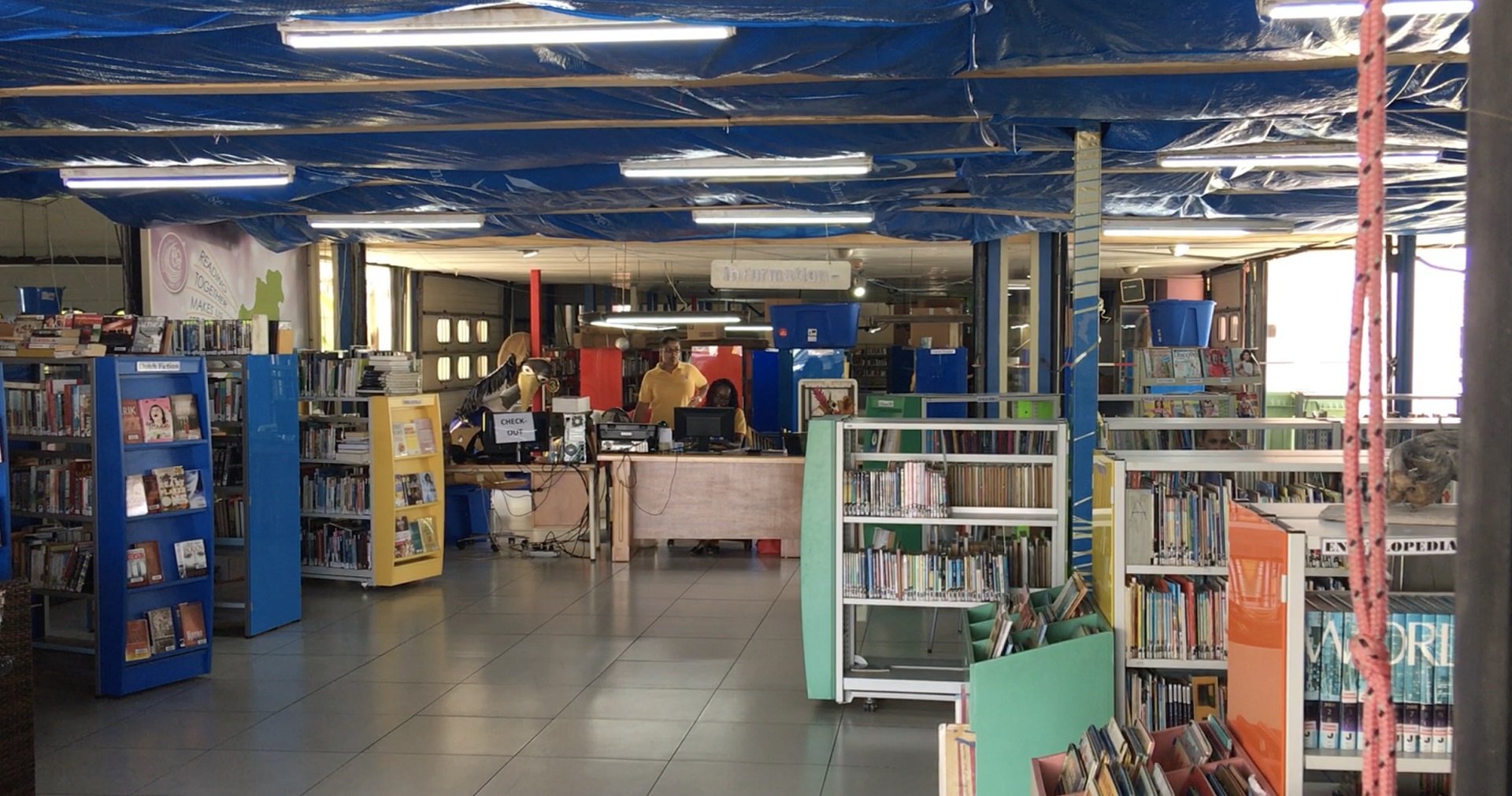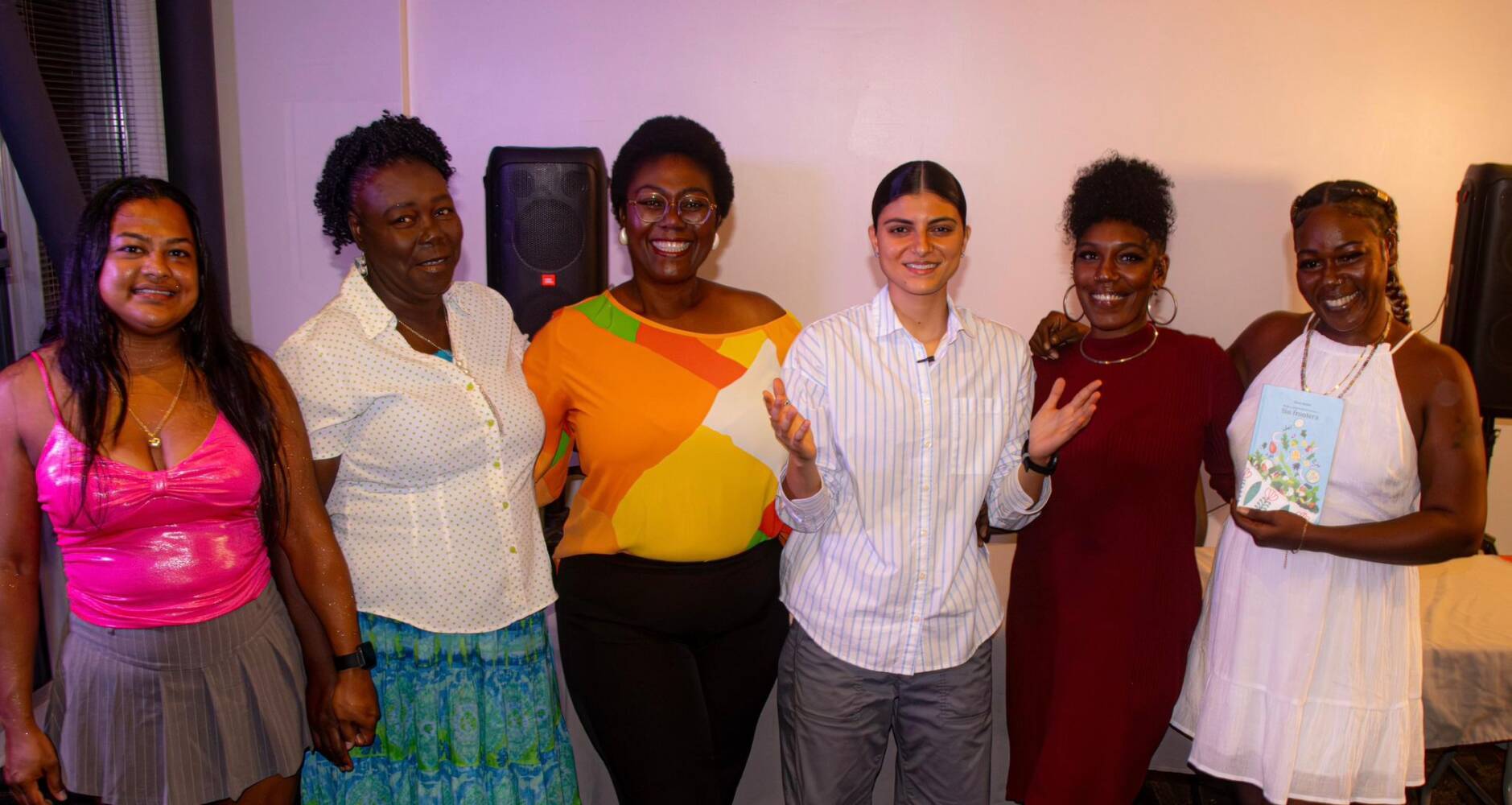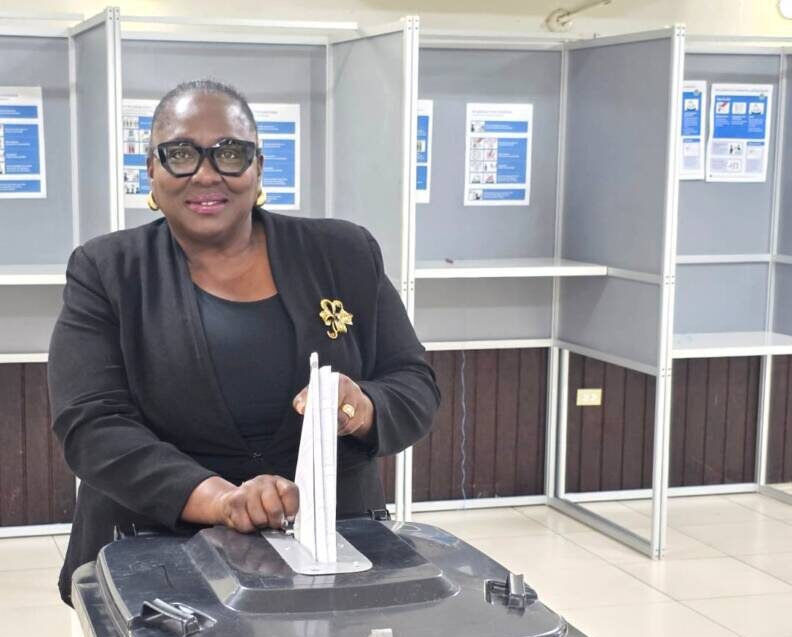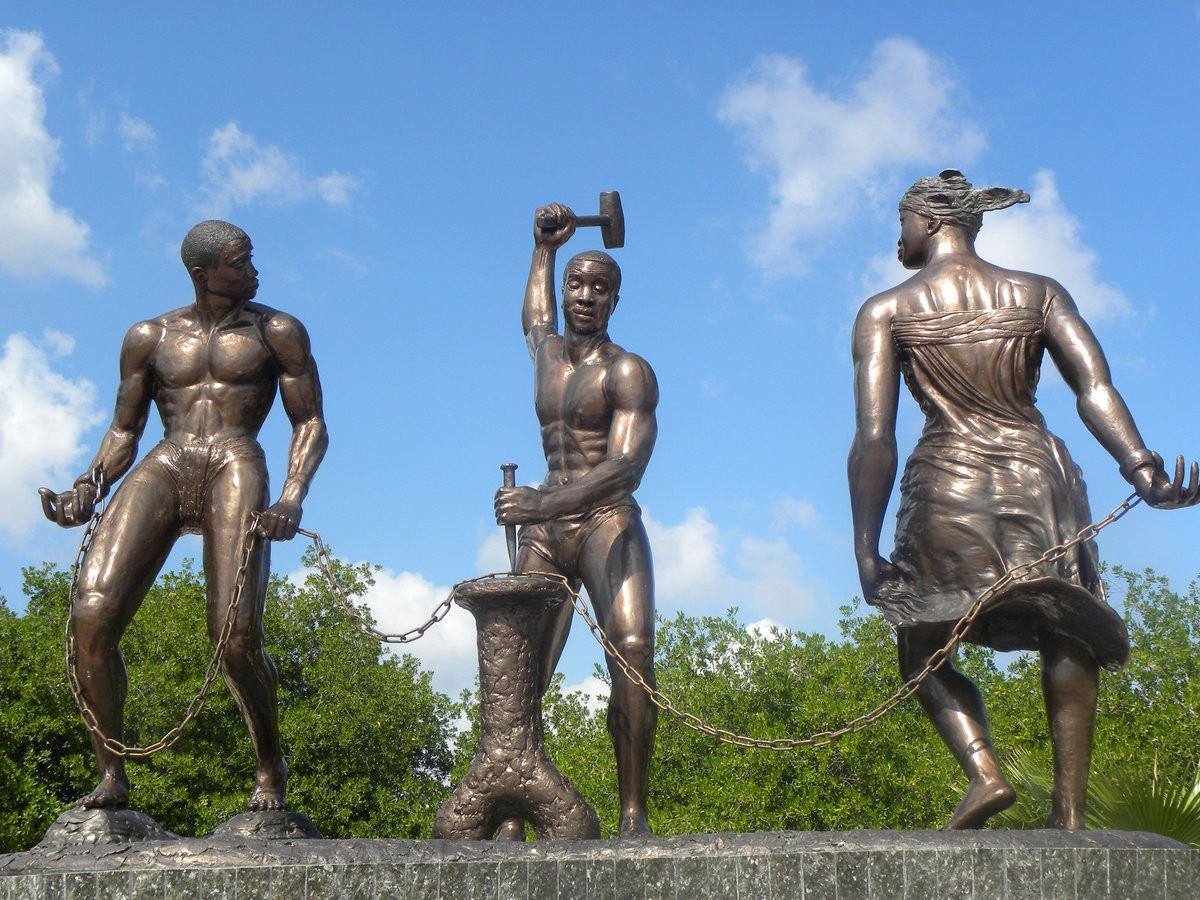PHILIPSBURG – “When it rains outside, it rains inside the library as well,” explains Sint Maarten Library Director Monique Alberts. The library’s building was heavily damaged during hurricane Irma. The library still has not received enough funds to move to a temporary building.
By Laura Bijnsdorp
Although the library has done its best to safely store as many books as they can, there are still quite a few in danger of water-damage. “We simply do not have the space to store all of them properly,” says Alberts.
Of the 53.000 books, thus far 3000 books have been deemed ‘unsalvageable’. The longer that the remaining books are exposed to the weather, the more likely it is that this number will grow.
Trust Fund
Since 2008, the library has been searching for funding for a new building to house the library. The new building would also include the St. Maarten museum and SIMARC (Sint Maarten Archaeological Center). Alberts: “The idea was to create a sort of cultural heritage and library center for Sint Maarten.”
The library and museum were both heavily damaged during hurricane Irma. The SIMARC office was completely destroyed. Alberts: “The plans for a joint-building are now a necessity.”
The new building plans, which will cost around $12 million, are on the list of ‘rebuilding’ projects by the Department of Education, Culture and Sports. These projects will be proposed to the World Bank, for funding by the Trust Fund.
Hurricane seasonThe Dutch government has earmarked a further €550 million for the island’s rebuilding. A significant part of this amount will be put in a Trust Fund, which is managed by the World Bank. The first tranche that The Netherlands will release into the Trust Fund is €112 million. The library’s proposal for a new building also includes a request of funds for a temporary home for the library, as construction will likely take up to three years. The six-month Caribbean hurricane season officially begins June 1 and ends November 30. “I don’t know what we are going to do if a storm hits us and we do not have another space by then,” Alberts says. |








